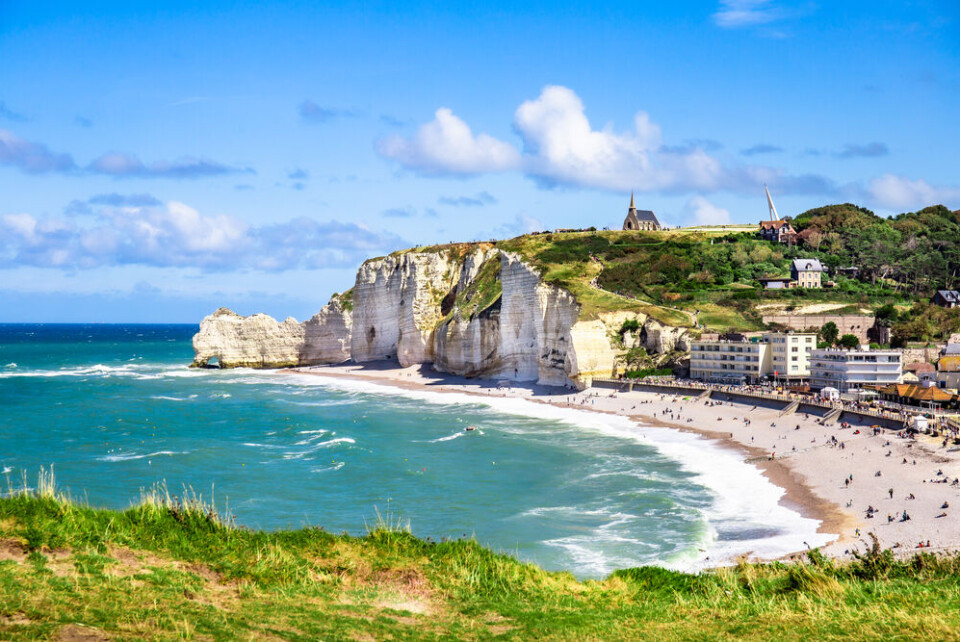-
France’s wild garlic season is here – but foragers should beware toxic lookalikes
Spring brings the fragrant plant to woodlands nationwide. We explain what to look out for
-
Record river levels, more evacuations: Latest on flooding in south-west France
Alerts are in place across five departments and residents in some areas are told to stay home
-
French second-home visa issues raised in House of Lords
British people experience an "expensive and bureaucratic process" to continue living in France
More than 100 French areas newly added to coastal erosion risk list
The communes will be subject to stricter planning controls and have access to government aid to mitigate the threat

More than 100 communes have been added to the list of areas in France at risk of coastal erosion, bringing the total number to 242.
A decree from July 31, published in the Journal Officiel on August 1, added 126 communes to the list, meaning that their urban planning projects must consider the shifting ground due to the risk of coastal erosion.
Most (but not all) of the newly added communes are in Charente-Maritime, Finistère and Manche.
The coasts of Normandy are also at particular risk, with the cliffs between Le Havre and Le Tréport (Seine-Maritime) estimated to retreat by around 20cm per year.
In February, a 40cm-long rock detached from the cliff, even taking away part of the road above it. In December 2021, a huge part of the cliff fell close to the Tilleul beach, at the edge of the gulf of Etretat.
Local mayor Raphaël Lesueur told France 3: “That was the first time that I saw a collapse of that size in the commune. [The rock was] 90 metres long and 50 metres wide, and practically four metres tall.”
Read more: Rising sea levels provoke exodus from northern French coastline
Climate change law
The list of at-risk communes was first created in a decree of April 29, 2022, within the context of the climate change law, la loi Climat et résilience [Climate and Resilience Act]. Despite criticism from some local authorities, these extra 100 communes joined the list voluntarily.
Being on the list means that any urban planning or changes must meet the conditions laid out in the urban code article L. 121-22-3 du code de l’urbanisme, to take account of the coastal areas at risk. The code outlines which developments would be authorised for the area, and which would not be considered safe.
The erosion areas concerned are categorised into two sections; one at risk within the next 30 years, and one at risk between 30 to 100 years.
Planning permission will be refused for any projects in areas at risk of collapse within the next 30 years and will be only be granted to areas at risk between 30-100 years on condition that the owner of the land and property agrees to pay for the project’s demolition when the risk becomes too great.
Communes on the list are also set to benefit from help and direction to enable them to make changes to ensure the safety of their inhabitants. For example, they should gradually relocate housing and activities in areas that will be affected by erosion.
Sébastien Fagnen, Mayor of Cherbourg-Octeville and vice-chairman in charge of town planning and land strategy for the Cotentin region, told La Presse de la Manche: “This decree introduces new administrative measures [and] useful legal tools.
“Although coastal risks had already been incorporated into certain town planning documents, the Climate and Resilience Act provides a useful framework. Climate change is a reality that we need to anticipate in order to limit the risks and protect the population.”
Yves Asseline, mayor of Réville (Manche), which was added to the list, said: "Urban development is complicated, and is becoming even more so due to the receding coastline and legislation. There are strategies to be put in place. So as not to be sidelined, we accepted the proposal to add the commune to this list.
“The aim is to work together, with the government departments, to apply the law without harming the communes, as part of a reasonable strategy.”
Yet, the amount of financial help the government will offer remains to be confirmed.
The list is subject to change, as communes can decide to be added (or withdrawn, as in the case of Vielle-Saint-Girons in Landes) from the list. It is also revised at least every nine years to ensure it includes the communes most at-risk.
The 126 communes newly added to the list
Read also
French second homes at risk of coastal erosion and other property news
Property buyers not attentive to natural hazards, French experts fear
Map: The 101 French communes affected by coastal erosion
COP26: New map shows 20% of French coast at risk from erosion
























